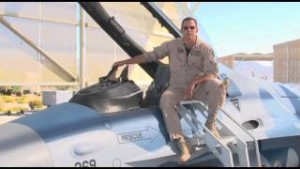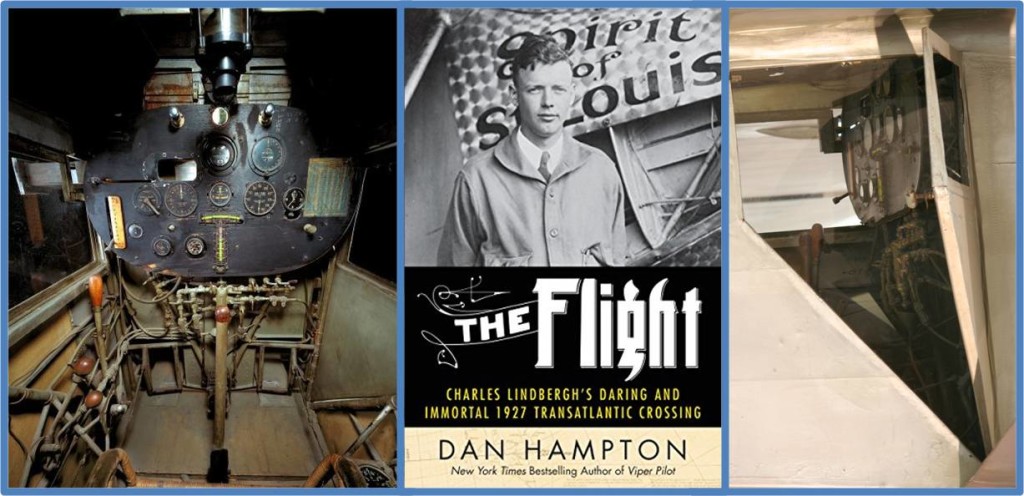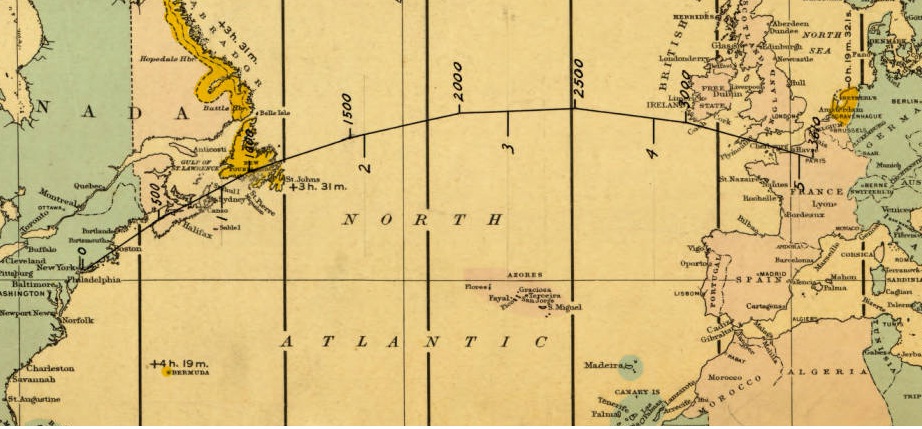Testimony of Pilot #6
An experienced aviator through his own eyes seeing and telling another aviator’s story of a dark and stormy night over the ocean most certainly more than qualifies for a “this is no s…t” testimony. With more night flying and night carrier landings than I ever needed, the selection from Dan Hampton’s THE Flight really strikes home and is spot on for this series.
THE Flight Chapter Six – Excerpts
THE EMPIRE OF THE NIGHT
by Dan Hampton
… THE LAST GATE is closing behind me. I’ve reached the point where real navigation must begin.
… as Slim stares out at the lonely black Atlantic, New York seems another world: chatting with the mechanics in the drafty hangar, eating a hot meal, writing letters. Right now it’s after 8 P.M. back in New York and there are folks dressed for dinner, or off to see a Broadway show, as he had done the night before takeoff. Others would be visiting with family, as he had the prior week. Arriving from Detroit, Lindbergh’s mother, Evangeline, had spent May 14 on Long Island, then left, satisfied that her son knew what he was doing. How strange was the fate that had put him here. Now he was alone in this frail cotton-and-steel cocoon over a dark ocean while millions of others around the world were warm and safe. People were doing all those mundane tasks that constitute most of life, and are so seldom appreciated unless one realizes it can all be lost. In his case, very quickly. Would anyone remember him? His whole life summed up in a few lines of newsprint to be read, then forgotten.
Shifting and stretching, Slim checks the gauges again.
… Why try to hold on to those stars? he asked himself. Why not start in now on instruments? After all, the cockpit was a cozy, safe little world and what else was needed? His body had conformed to the seat and through the stick and throttle he could feel the aircraft. The throbbing power of the engine, the wings had become an extension of his own fingers, with the slightest touch lifting or dropping an aileron. Gauges glowed faintly from the Radiolite paint and everything worked in harmony. He and the Spirit were connected through a bond only pilots share with aircraft. But if I start flying blind, God only knows how many hours of it lie ahead. It might go on through the entire night.
….It is like flying through a narrow, dark mountain pass, cliffs rising on both sides with nothing visible ahead. Unlike in the open air with no references, Lindbergh can feel Spirit’s speed as they slide along the shifting walls of cloud.
And what walls! Charcoal towers only slightly less black than the night, they soar upward to seemingly immeasurable heights, blotting out the stars above and yawning open far below. There is no doubt now that a storm area lies ahead. The weather has tricked him, those gently rolling plateaus merely an illusion to draw the Spirit in close before springing the trap.
It’s time.
It’s time to transition to instruments, and “flying blind.” Anything he sees outside at this point will just be a distraction, and there’s comfort in the cocoon of the cockpit, with the familiar dials and the mental precision of blind flying. The body’s reflexes must be largely ignored so the mind can take complete control. The mind must operate mechanically just as the gyroscope that guides it. Slim knows this is the hardest part—to disregard the senses and his instincts, to put all his faith in a few dials.
Suddenly everything beyond the windows vanishes. He’s completely in the clouds now with no outside references. Even the stars are gone. At least the cloud plateau and towers had a surface, something to see. Now there is nothing but blackness. Except . . . a yellow-white flash catches his eye, then another and another. The exhaust! It’s just the exhaust glaring off the mist, he realizes with relief. So that is visible to keep him company, and the glow from his dials. Nothing else exists now, he tells himself; my world and my life are compressed within these fabric walls. Flying blind is a constant, grinding chore and Slim begins a systematic cross-check, glancing at the altimeter, then down to the airspeed indicator. His eyes flicker to the mirror at the panel’s top center, reading backwards the magnetic compass heading in the reflection, then his gaze drops straight down to the inclinometer. The wings rock and the little bubbles bounce, but he fights an impulse to instantly correct. Let it settle out . . . small movements. When a single one strays off, the rest go chasing after it like so many sheep.
Flying tense is never good so he flexes his right hand, opening it and letting the stick rest lightly against his fingers. The stabilizer and throttle are set so Slim can switch hands when he wishes, to ease the fatigue. Focusing on the turn and bank indicator he is relieved to see the little ball centered. The tachometer is steady at 1,650 revolutions. Lindbergh checks the oil temperature and fuel pressure last, two little gauges at the bottom of the panel. Why are they so small? Then the scan begins again, slowly and methodically.
Time passes. Ten minutes or thirty, he’s not quite sure. Spirit is at 10,500 feet now and it is cold! Suddenly a thought occurs: there are things to be considered outside the cockpit. Slim pulls off his left mitten, sticks his arm out of the window, then instantly snatches it back as sharp pinpricks shoot through his hand. No . . . no, not that! He fumbles for the flashlight, switches it on, and aims the beam outside. Shining it out along the double struts, he squints at the bottom of the wing, then plays the beam forward. The leading edges of the strut are bright with ice, and a knot twists in his gut, heavy and tight. Particles fly through the light and Lindbergh hunches forward, playing the beam along the wing.
More ice.
Fighting the hollow, rising fear, Slim knows that this can kill him; ice can disfigure the wing, disrupting the airflow and causing a stall. Or it can overcome the carburetor heater and choke the engine as it did over Arizona. Eyes wide, he stares at the instrument panel. The airspeed indicator depends on a wand like pitot tube mounted on the leading edge of the left wing, while the altimeter receives air pressure from static ports, exterior flush-mounted openings shielded from the wind stream. If either clog with ice, the cockpit instruments won’t function. Nor will the earth inductor compass if the little windmill mounted behind him on the fuselage freezes up, too. The cups rotate in the wind and generate power for the inductor’s generator.
He knows he must get back into clear air—quickly. But as his hands and feet begin to move, Slim is conscious of something dark hanging overhead. Heavier and thicker than the surrounding night, it droops across the sky like a huge mushroom. A thunderstorm. Ominous, unpredictable, and extremely dangerous, it’s something you can’t outrun or out climb. A pilot must either get around it or go straight through.
“Kick rudder hard . . . no time to lose,” he mutters anxiously. “The turn indicator’s icing up right now . . . there’s no time . . . only a few seconds . . . quick.”
But if he rushes through the turn, the plane could spin out of control. At night, in a thunderstorm, over open water, this would certainly kill him. Slim watches the instruments and with the concentrated discipline of a trained pilot slowly forces everything else from his mind. He must fly carefully and deliberately despite knots in his stomach, a lurching, skidding aircraft, and the bitter cold. If he panics, he dies.
“No,” he says aloud, comforted by the sound of his own voice in the tiny cockpit. “No, faster; turn the right amount.”
Left boot forward against the pedal . . . Lindbergh can feel the rudder strain against the wind and he locks his eyes to the turn indicator. The little black ball creeps in the opposite direction just beyond the two parallel center lines. As he nudges the stick forward and left, his eyes flick down to the inclinometer. The ball is high, above level, and the plane is rocking in turbulence. Airspeed is 10 miles per hour too low—if he doesn’t correct then the Spirit will stall and spin into the dark, cold water below.
“Turn faster! You see the airspeed’s dropping. It’s ice doing that! Quick, or it’ll be too late!”
Eyes wide open, he fights for calm. Slow movements. Deliberate and steady. With his left hand he shoves the throttle forward until the tachometer rises by 50 revolutions.
“No,” Slim argues with himself. “It’s not ice . . . at least not very likely. It’s probably just the normal slowing down in a bank.”
Spirit bobbles its way through the turn and Slim has no way of knowing how far he’s come. He’s at 10,500 feet, then 10,200 feet, as the airspeed needle hits 100 miles per hour. Descending in the turn . . . skidding . . . can’t keep the plane level. The pitch indicator is an entire bubble low so Spirit’s nose is down. Add power . . . pull back on the stick! I ought to be turned around by now, Slim thinks, rolling the wings level and shining the flashlight on his instruments. At 10,300 feet the airspeed is steady, but the earth inductor compass is moving backward and the magnetic compass is swinging wildly. Rough air. It always takes a few moments for the heading card to stabilize.
But what’s that?
Slim’s eyes shift outside, and he realizes Spirit isn’t wrapped in gray. Stars! Bright, hard, and glittering. The air around the plane is still hazy, but the cloud’s drooping wet fingers have released the Spirit temporarily, and it’s clear above. He looks at the clock . . . ten minutes. That’s all he spent in the thunderstorm, but it seemed like all night. Picturing the weather chart in his mind, Slim thinks south is the best bet. If he is truly on the southern edge of the storm and high pressure is pushing it north, as Doc Kimball reported, then he must try to get around it to the south. Stick and rudder left, he holds the turn indicator steady, feet and hands working to keep the Spirit coming back around to 089 degrees. If it were daytime, Slim could navigate from cloud tower to tower, sighting off in the distance like one would do with mountain peaks. But at night he can only try to hold the heading and, if another thunderstorm blocks the way east, bank up around it again to the south. Always to the south.
But then he has a nasty thought. What if the Weather Bureau was wrong and the whole ocean is like this? Slim leans back in the seat and again cross-checks his instruments. If he climbed up higher maybe the clouds would break up and the shifting canyons far below would widen. Maybe not. But he cannot go back through them. Ice, turbulence, or disorientation would surely get him eventually, sending him stalling, diving, and spinning into the ocean.
For the first time since takeoff he seriously considers turning back. But to where? Where would he land? Or would he try to fly 1,400 miles back to New York and Roosevelt Field’s muddy runway? But the weather may have closed in behind him and the American coast might be worse than this. How would that be anyway, to fly thirty hours and end up back in Long Island? No, if he can keep heading eastward he’ll strike Ireland, or at least Europe.
Lindbergh is shaken but determined.
What I can do depends largely on what I have to do.
 Lieutenant Colonel Dan Hampton (USAF, Ret.) flew more than 150 combat missions during his twenty years (1986–2006) as an F-16 Wild Weasel fighter pilot.
Lieutenant Colonel Dan Hampton (USAF, Ret.) flew more than 150 combat missions during his twenty years (1986–2006) as an F-16 Wild Weasel fighter pilot.
My purpose in these pages is to put the reader into the cockpit of the Spirit of St. Louis during those thirty-three and a half hours on May 20 and 21, 1927, and to fly along with him. No other book about this man and this flight has been written from the cockpit point of view by a fellow aviator with the desire to have us all share his triumph, to be there as the frontier of aviation is changed forever.
… Regardless of what judgments are passed on Lindbergh, no one can dispute the raw courage and skill he showed the world in May 1927. Others had attempted this most dangerous of exploits, and failed, and many passed into relative oblivion. …
In writing this book I was incalculably aided by the man himself, for having Lindbergh’s own thoughts and observations with me was irreplaceable. All first-person quotes, including internal dialog, are drawn from Lindbergh’s own recollections. He was a meticulous note taker, and his papers are wonderfully preserved in the Yale University Library, in New Haven, Connecticut, and the Missouri Historical Society, in St. Louis. …Perhaps the best place to start with Lindbergh himself is with the posthumously published Autobiography of Values …
…So in reading this book, admire the bravery necessary to survive those lonely, dangerous, and uncertain hours. Put yourself in a small, fabric-covered cockpit in a thousand-mile storm over the Atlantic at night and learn what you didn’t know about the man and his dream. Above all else, Charles Lindbergh believed in the power of aviation: its untapped potential and inherent capacity to join peoples, advance technology, and bring the world closer together. That passion and courage define a spirit that all Americans can claim through Charles Lindbergh and that we, as humans, can collectively share.
The Flight: Charles Lindbergh’s Daring and Immortal 1927 Transatlantic Crossing by Dan Hampton.







